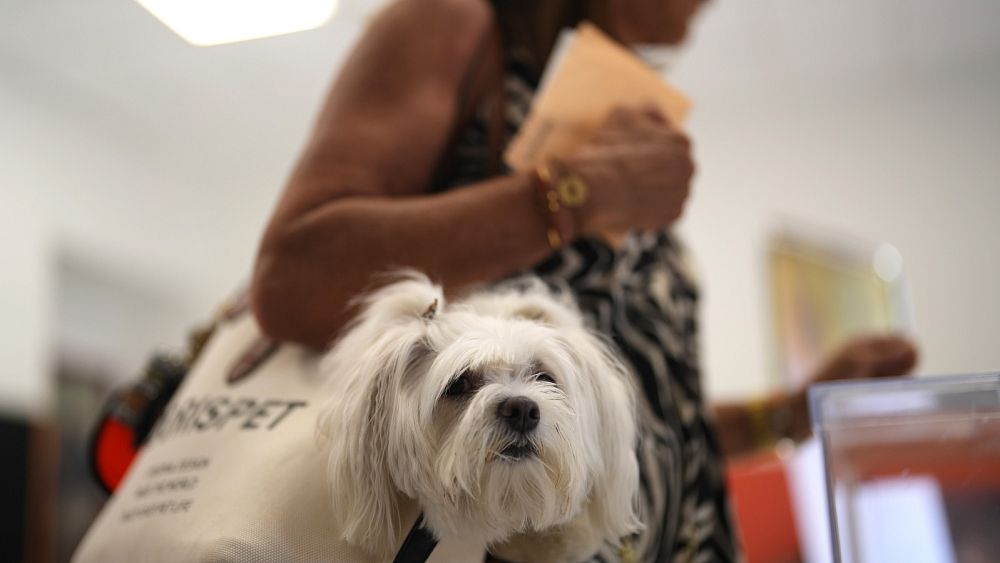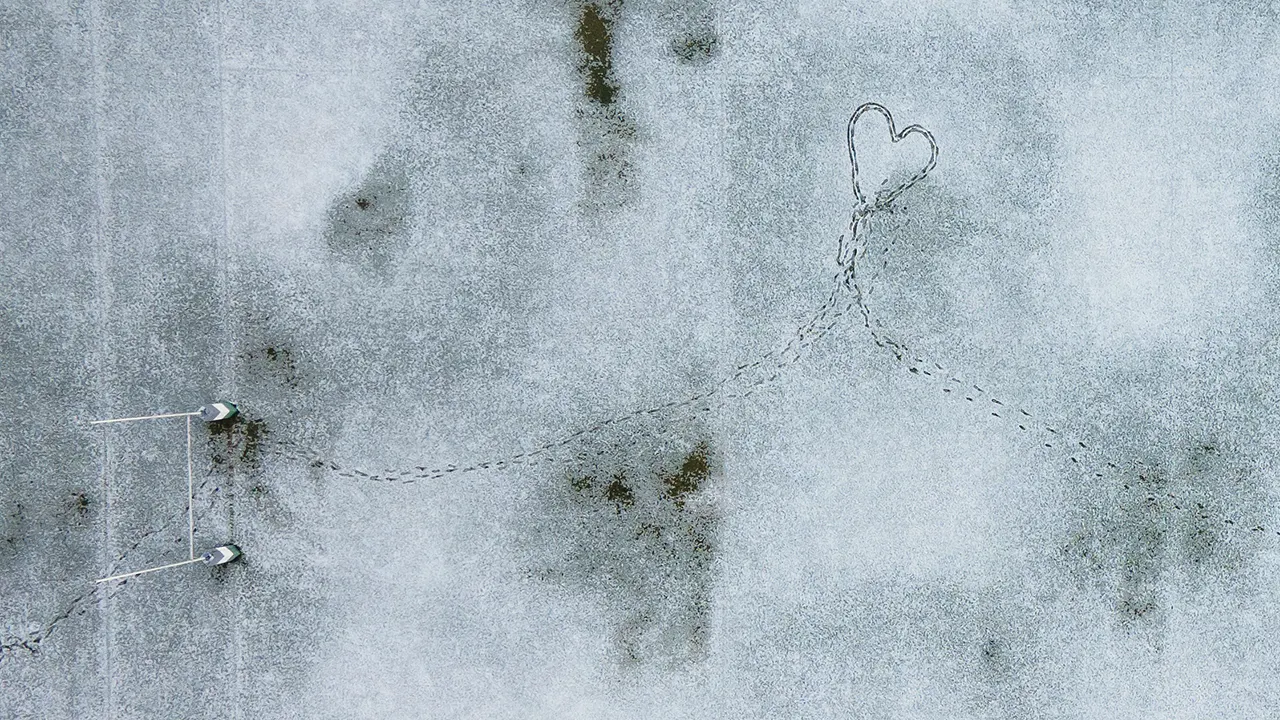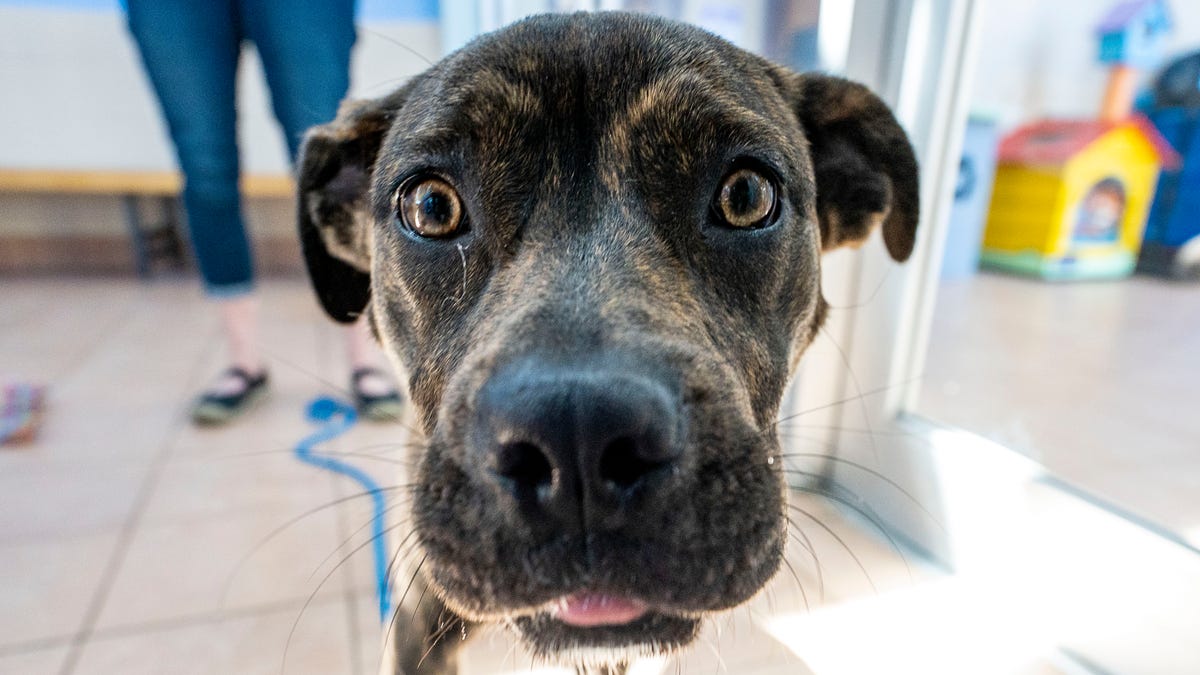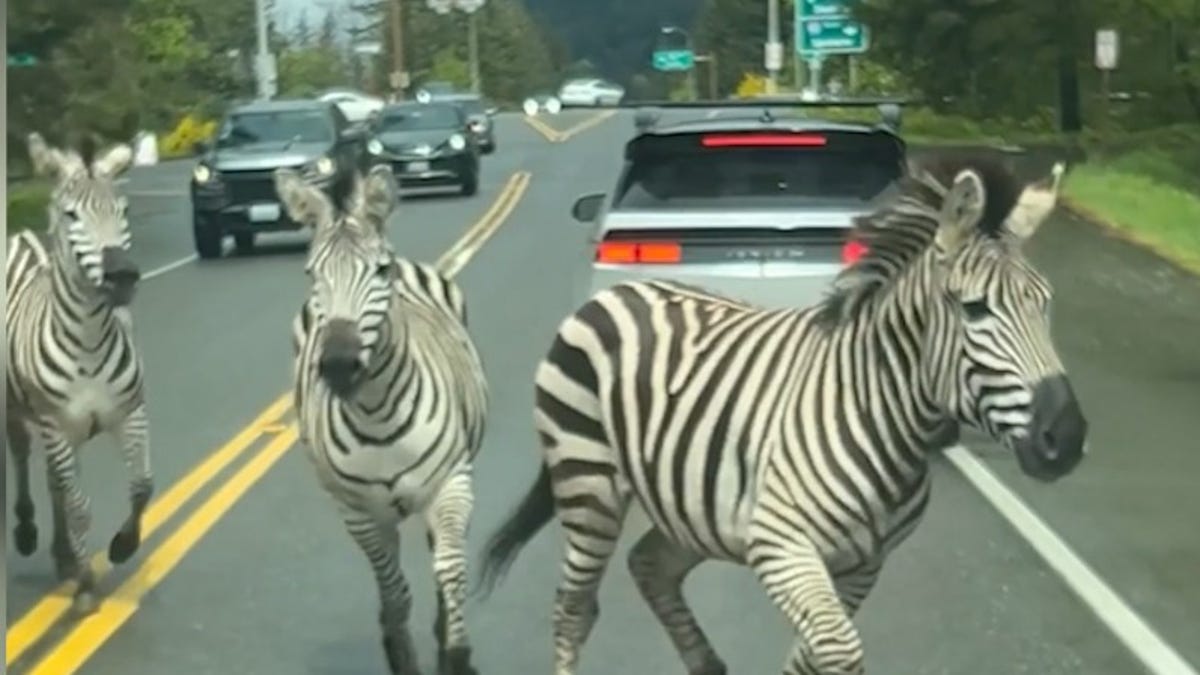World
Spain rolled out a new animal welfare law. It has many contradictions

Police in Spain now have powers to arrest pet owners for leaving their animals unattended following the adoption of a new animal welfare law that came into force last week.
The law targets those who mistreat animals by bringing in fines up to €200,000.
However, the pioneering legislation has left out fighting bulls, hunting dogs and dolphins which perform in marine parks.
The apparent contradictions within this legislation have been excused by animal rights groups which say the country’s first specific animal rights legislation is an achievement.
In a sign that attitudes towards animals are changing in Spain, the law is proof that the issue is now at the centre of political debate.
It bans the buying of pets in shops and online but gives shops a grace period to find homes for these pets. From now onwards, pets will only be sold from registered breeders and be allowed into restaurants and bars when previously they have been tied up outside.
Wild animals like lions or tigers have been banned from circuses with the owners of these animals given six months to comply. Marine parks may still use dolphins until these mammals die.
Bullfights, regarded by some Spaniards as an integral part of the country’s culture but seen by others as cruel, have not been included in the law.
A proposal to include hunting dogs was also left out by the ruling Socialist government after it sparked an outcry from hunters and conservatives in rural areas.
‘An achievement for the animal rights movement’
About 29 million animals are kept as pets in Spain, the vast majority of them dogs, according to government statistics. However, around 300,000 are abandoned each year and about one-third of those are put down.
Mandatory pet insurance and registration as well as training for pet owners is one of the novelties of the law.
However, those requirements and some legal aspects were delayed because Spain has no effective government. July’s inconclusive elections left the country with a hung parliament.
If acting Socialist Prime Minister Pedro Sanchez manages to form a coalition government, these measures may be enacted.
AnimaNaturalis, an animal rights group, campaigned hard for hunting dogs to be included in the new law but were defeated.
Every February, after the hunting season ends, hundreds of dogs are abandoned or even hanged if they are not of use to their owners, campaigners claim.
“In terms of the hunting dogs, it is a battle which we have lost unfortunately for the hunting dogs. The owners of these dogs did not want them to be registered. But despite everything it is good news that all dogs should be registered,” Aida Gascon, of Animanaturalis, told Euronews.
“The mere existence of this pioneering legislation at a state level is an achievement for the animal rights movement which has managed to put animal rights at the centre of the political agenda permanently.”
Animal rights arouses passions in Spain with some in rural areas saying hunting wild boar, foxes, deer and other animals is an essential part of their lifestyle.
Sergio García Torres, the director general of animal rights in the Spanish social rights ministry, said he had received threats and had personal security.
He said “sooner or later” hunting dogs would be included in future legislation on animal rights.
However, hunters vowed to fightany attempt to include under the same legislation animals which are used for work along with domestic pets.
“This law represents a direct threat to the viability of hunting in Spain,” Manuel Gallardo, of the Royal Spanish Hunting Federation, which represents 337,000 hunters, told Euronews.
The EU’s focus on livestock
Across Europe legislation on animal welfare varies but the main area for political debate centres on the treatment of farm – not domestic – animals.
The European Commission is reconsidering new welfare measures because of the cost of food inflation, according to a recent report by the Financial Times.
Brussels was planning a ban on measures like the use of livestock cages, the killing of day-old chicks and the sale and production of fur.
But concerns that the proposed changes could push up food costs, which have risen sharply after the Russian invasion of Ukraine, have led the Commission to reconsider the plans.
Despite the possible back-track, the EU has taken strides in recent years towards animal welfare measures.
In 2007, the bloc banned veal crates and in 2012, it implemented a ban on tiny cages for egg-laying hens.
The EU has also implemented a partial ban on cages for female breeding pigs, allowing pork producers to lock them in small crates, which have been criticised by animal rights groups.
Individual EU countries have introduced their own bans on cages for pigs or hens.
However, Germany and Denmark are the only agricultural heavyweights among them.
Germany will introduce a ban on cages from 2025 while Denmark’s near-total ban on cages for pigs starts from 2035.
France, another major agricultural country, has introduced a partial ban on the sale of eggs from caged hens.

World
Ukraine's divisive mobilization law comes into force as a new Russian push strains front-line troops
KYIV, Ukraine (AP) — A divisive mobilization law in Ukraine came into force on Saturday, as Kyiv struggles to boost troop numbers after Russia launched a new offensive that some fear could close in on Ukraine’s second-largest city.
The legislation, which was watered down from its original draft, will make it easier to identify every conscript in the country. It also provides incentives to soldiers, such as cash bonuses or money toward buying a house or car, that some analysts say Ukraine cannot afford.
Lawmakers dragged their feet for months and only passed the law in mid-April, a week after Ukraine lowered the age for men who can be drafted from 27 to 25. The measures reflect the growing strain that more than two years of war with Russia has had on Ukraine’s forces, who are trying to hold the front lines in fighting that has sapped the country’s ranks and stores of weapons and ammunition.
Ukrainian President Volodymyr Zelenskyy also signed two other laws Friday, allowing prisoners to join the army and increasing fines for draft dodgers fivefold. Russia enlisted its prisoners early on in the war, and personnel shortages compelled Ukraine to adopt the new measures.
Russian troops, meanwhile, are pushing ahead with a ground offensive that opened a new front in northeastern Ukraine’s Kharkiv region and put further pressure on Kyiv’s overstretched military. After weeks of probing, Moscow launched the new push knowing that Ukraine suffered personnel shortages, and that its forces have been spread thin in the northeast.
Russian President Vladimir Putin said on Friday during a visit to China that the Russian push aims to create “a buffer zone” rather than capturing Kharkiv, the local capital and Ukraine’s second-largest city.
Still, Moscow’s forces have pummeled Kharkiv with strikes in recent weeks, hitting civilian and energy infrastructure and prompting angry accusations from Zelenskyy that the Russian leadership sought to reduce the city to rubble. On Friday, Mayor Ihor Terekhov said that Russian guided bombs killed at least three residents and injured 28 others that day.
Moscow denies deliberately targeting civilians, but thousands have died or suffered injuries in the more than 27 months of fighting.
The U.S. last week announced a new $400 million package of military aid for Ukraine, and President Joe Biden has promised that he would rush badly needed weaponry to the country to help it stave off Russian advances. Still, only small batches of U.S. military aid have started to trickle into the front line, according to Ukrainian military commanders, who said it will take at least two months before supplies meet Kyiv’s needs to hold the line.
Thousands of Ukrainians have fled the country to avoid the draft since Russia’s all-out invasion in February 2022, some risking their lives as they tried to swim across a river separating Ukraine from neighboring Romania and Hungary.
Late on Friday, Ukraine’s border service said that at least 30 people have died trying to cross the Tisza River since the full scale-invasion.
Romanian border guards days earlier retrieved the near-naked, disfigured body of a man that appeared to have been floating in the Tisza for days, and is the 30th known casualty, the Ukrainian agency said in an online statement. It said the man has not yet been identified.
___
Follow AP’s coverage at https://apnews.com/hub/russia-ukraine
World
An unusual autumn freeze grips parts of South America, giving Chile its coldest May in 74 years

Chileans are bundling up for their coldest autumn in more than 70 years mere days after sunning in T-shirts — a dramatic change of wardrobe brought on this week by a sudden cold front gripping portions of South America unaccustomed to bitter wind chills this time of year.
CHILE SHUTS DOWN A POPULAR GLACIER, SPARKING DEBATE OVER CLIMATE CHANGE AND ADVENTURE SPORTS
Temperatures broke records along the coast of Chile and in Santiago, the capital, dipping near freezing and making this month the coldest May that the country has seen since 1950, the Chilean meteorological agency reported.
An unusual succession of polar air masses has moved over southern swaths of the continent, meteorological experts say, pushing the mercury below zero Celsius (32 Fahrenheit) in some places. It’s the latest example of extreme weather in the region — a heat wave now baking Mexico, for instance — which scientists link to climate change.
Footprints create the shape of a heart in a snow-covered rugby field in Santiago, Chile, Wednesday, May 8, 2024. (AP Photo/Matias Basualdo)
“The past few days have been one of the longest (cold fronts) ever recorded and one of the earliest ever recorded” before the onset of winter in the Southern Hemisphere, said Raul Cordero, a climatologist at Santiago University. “Typically the incursions of cold air from the Antarctic that drive temperatures below zero occur from June onwards, not so much in May.”
The cold front sweeping in from Antartica has collided with warm air pushing in from the northwestern Amazon, helping fuel heavy rainstorms battering Brazil, according to that country’s National Meteorological system.
Chile’s government issued frosty weather alerts for most of the country and ramped up assistance for homeless people struggling to endure the frigid temperatures on the streets. Snow cloaked the peaks of the Andes and fell in parts of Santiago, leading to power outages in many areas this week.
“Winter came early,” said Mercedes Aguayo, a street vendor hawking gloves and hats in Santiago.
She said she was glad for a boost in business after Chile’s record winter heat wave last year, which experts pinned on climate change as well as the cyclical El Niño weather pattern.
“We had stored these goods (hats and gloves) for four years because winters were always more sporadic, one day hot, one day cold,” Aguayo said.
This week’s cold snap also took parts of Argentina and Paraguay by surprise.
Energy demand soared across many parts of Argentina. Distributors cut supplies to dozens of gas stations and industries in several provinces to avoid outages in households, , the country’s main hydrocarbon company, CECHA, said Thursday.
World
Brussels, my love? Transparency over MEPs' side jobs

In this edition, we look at what lawmakers’ extracurricular activities mean for their core role.
This week, we are joined by Sophia Russack, senior researcher from the Centre for European Policy Studies, Petros Fassoulas, secretary general of European Movement International and Anna Nalyvayko, senior project officer from the Wilfried Martens Center.
Panelists debate the ethical questions raised by MEPs who have side jobs. Those extra roles are legal, but the political earthquake caused by the Qatarargate scandal led to tighter rules and more transparency.
Is this enough to bridge the gulf between citizens and politicians, in today’s fractured political landscape?
“We see that they have improved rules when it comes to reporting requirements, to laying open your financial situation before and after the offers, and so on. But to be honest, none of these things will prevent another Qatargate,” said Sophia Russack, a think tanker who is an expert in EU institutional architecture, decision-making processes and institutional reform.
Despite these concerns, Petros Fassoulas said MEPs shouldn’t abandon contact with the real world altogether.
“It’s important for them to have the opportunity to bring expertise from outside and engage also with the world outside of the chamber,” Fassoulas said. “An MEP or any parliamentarian should be in contact with the people that they regulate, the businesses that they have an impact on.”
Guests also discussed the reasons for the crisis of public confidence in politicians, and gave some ideas for solutions.
Watch “Brussels, my love?” in the player above.
-

 World1 week ago
World1 week agoPentagon chief confirms US pause on weapons shipment to Israel
-

 Politics1 week ago
Politics1 week agoRFK Jr said a worm ate part of his brain and died in his head
-

 Politics1 week ago
Politics1 week agoOhio AG defends letter warning 'woke' masked anti-Israel protesters they face prison time: 'We have a society'
-

 News1 week ago
News1 week agoNine Things We Learned From TikTok’s Lawsuit Against The US Government
-

 Politics1 week ago
Politics1 week agoBiden’s decision to pull Israel weapons shipment kept quiet until after Holocaust remembrance address: report
-

 Education1 week ago
Education1 week agoVideo: Police Use Pepper Spray on Protesters on G.W.U.’s Campus
-

 World1 week ago
World1 week agoA look at Chinese investment within Hungary
-

 News1 week ago
News1 week agoThe Major Supreme Court Cases of 2024


















